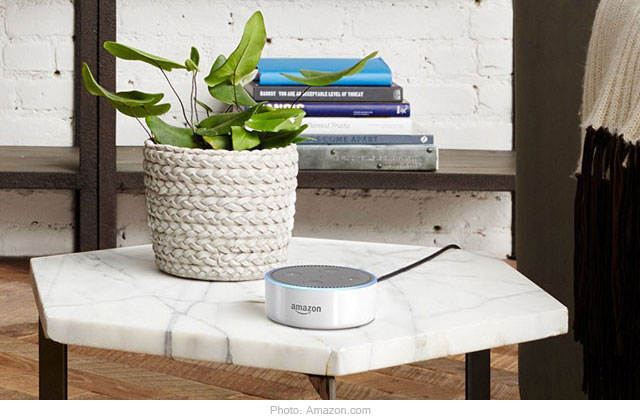The tech industry considers the Internet of Things (IoT), or the network of multiple devices that communicate with each other without human involvement, to be an inevitable part of our future. And as such, it is quite refreshing to see that e-commerce giant Amazon.com, Inc. (NASDAQ:AMZN), which it’s important to remember that at first was not a hardware company, is at the forefront of IoT by bringing a truly connected home within the reach of more and more people.
In late 2014, Amazon released its smart speaker, Echo, to the market. To date, the company has sold more than 5 million Alexa powered units. That may not seem much as far as smart devices go, but according to a Consumer Intelligence Research Partners (CIRP) report, the Seattle-based company has sold over 2 million units this year alone, and that’s before the holiday season. Additionally, based on data from 1010Data, Echo holds over 25% of market share, giving the traditional players in the Hi-Fi speakers category a run for the money. Needless to say, this is a good indication that awareness and interest in Amazon Echo is increasing, which is amazing for a gadget that besides being only 2 years old, when it first got released the market’s reception was warm at best.
The increase in Amazon Echo sales can be attributed to a number of factors.
Probably one of the biggest factors in the surge of Echo’s popularity is the heavy promotion from Amazon. But aside from a strong and comprehensive ad campaign, the fact is the gadget is bundled with a lot of very enticing deals from the online retailer, which has really helped the general public’s knowledge about the device. In fact, the CIRP adds that as of the third quarter of this year, around 69% of Amazon customers know about Echo. This is a massive increase compared to the first quarter of fiscal 2015, where only 20% of Amazon customers knew about the device.
Another big factor in the success of Echo is Amazon’s release of multiple Echo variants. Compared to Google Home, Echo’s biggest rival, Google’s (NASDAQ:GOOG, GOOGL) device is cheaper by around $50 or so. However, Amazon released the “Dot” variant which is around half the price of the full Echo. It may not have the speaker, but it still retains most of Echo’s functionality, which makes it a very attractive (and more attainable) option. Also, there is the “Echo Tap” which is a portable version of Echo and still at a lower price. With these options, Amazon is able to cover a bigger demographic of techies who want to experience smart home features.
Strong hardware and software is another major pillar for the success of Echo. Alexa, the device’s digital assistant, is very effective at understanding spoken commands, making it a truly useful and functional companion in your home. Also, there are a lot of available “skills” for the device. These are dedicated apps that you can add to Alexa, which allows the device to function as a news delivery service, can read you cooking recipes and a host of other functions. Also, notable is that Alexa has the biggest third party support out of all smart services today, allowing you to sync and control more devices with Echo, along with a host of other nifty internet of things features.
All indications point to Amazon being all-in with Echo. With this type of commitment, consumers can expect greater and more innovative features from the platform in the years to come.
- Bulenox: Get 45% to 91% OFF ... Use Discount Code: UNO
- Risk Our Money Not Yours | Get 50% to 90% OFF ... Use Discount Code: MMBVBKSM
Disclaimer: This page contains affiliate links. If you choose to make a purchase after clicking a link, we may receive a commission at no additional cost to you. Thank you for your support!



Leave a Reply